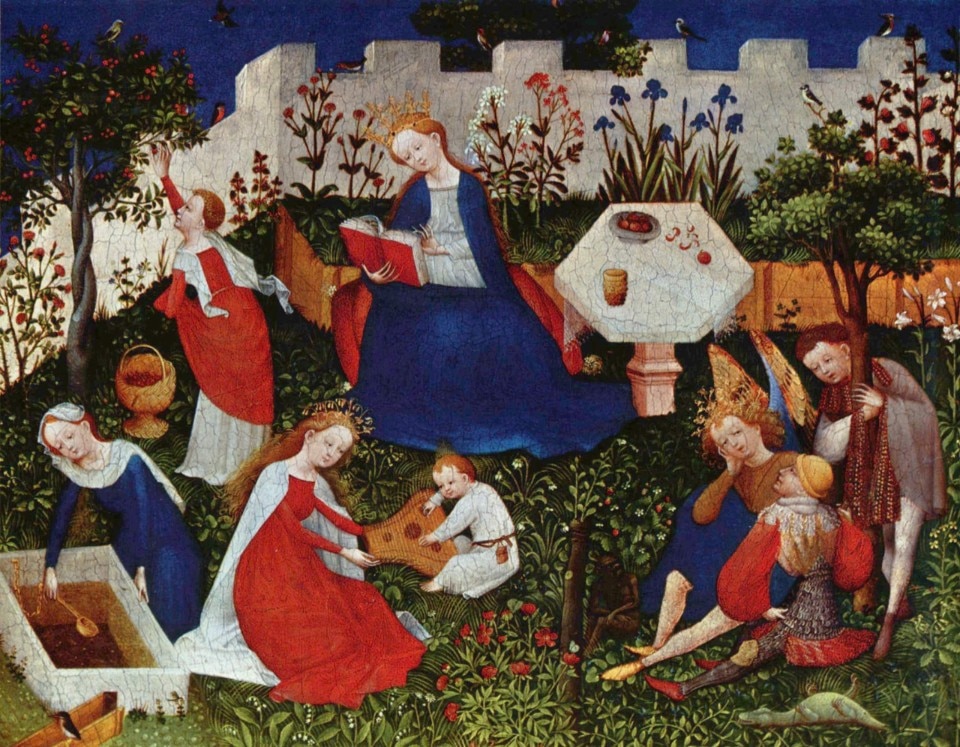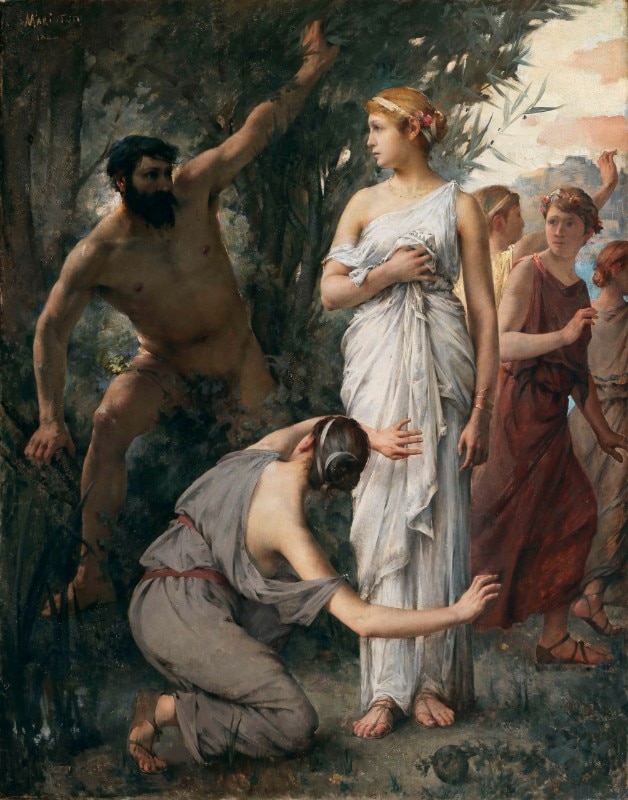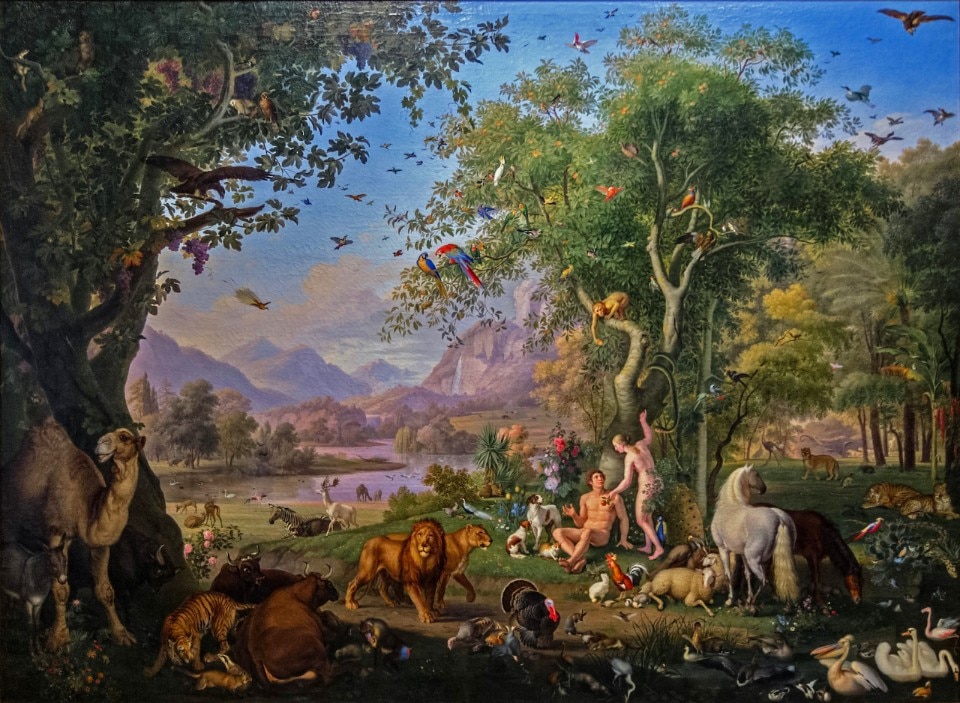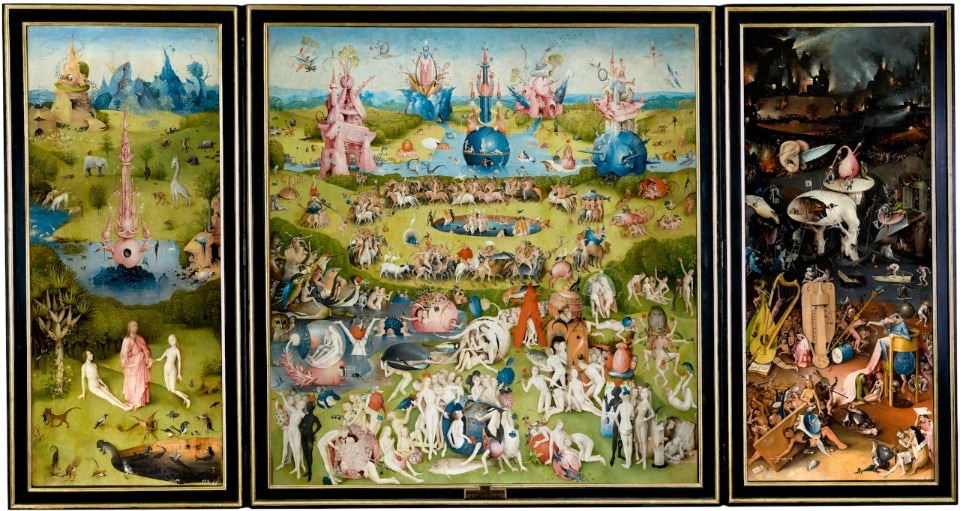The most classic example of antonomasia of all times: “It’s been an odyssey”. During these last few months, we all have been going through our own odyssey. We all live in different countries, our homes look different and we have the most diverse needs... but we’re all going through an odyssey.
And in The Odyssey, among many other things, there is a garden. Or rather, "the" garden, just like the one painted by Jean Alfred Marioton who, in 1888, portrayed Ulysses and Nausicaä.
“But without the courtyard, hard by the door, is a great orchard of four acres, and a hedge runs about it on either side. Therein grow trees, tall and luxuriant, pears and pomegranates and apple-trees with their bright fruit, and sweet figs, and luxuriant olives. Of these the fruit perishes not nor fails in winter or in summer, but lasts throughout the year; and ever does the west wind, as it blows, quicken to life some fruits, and ripen others; pear upon pear waxes ripe, apple upon apple, cluster upon cluster, and fig upon fig. There, too, is his fruitful vineyard planted, one part of which, a warm spot on level ground, is being dried in the sun...” (Homer, Odyssey, VII, 112-122, translated by A.T. Murray).

In fact, the garden, which is the locus amoenus par excellence, represents in literature and art a dimension that is separate from our everyday life, a human-scale space: the enchanted garden of the Hesperides, Flora’s Garden, or, in biblical tradition, in the Book of Genesis, the earthly paradise, the rose garden described in Solomon’s Canticle of Canticles or the episode of the garden of Joseph of Arimathea, in which Jesus appears to Mary Magdalene.
Pictorial arts were inspired by this vast literature to represent the garden as the symbol for the power that humans have over nature. Represented as a luxuriant place, sometimes surrounded by walls, filled with fountains, fruit trees or domesticated animals, the garden is depicted as a place of peace and spiritual refreshment.
Each element becomes a symbol and conveys a message: The walls have an initiatory and sacred connotation, and the garden becomes a borderland between two worlds, nature and culture, like in “Garden of Paradise”, a 15th century painting by an unknown artist.
In fact, the garden, which is the locus amoenus par excellence, represents in literature and art a dimension that is separate from our everyday life, a human-scale space
Within these walls, called hortus conclusus, we can often find a high reed fence, which indicates the domestication of passions, very often symbolized by a unicorn. The fountains, which in pictorial art are usually decorative elements, become the symbol of the perpetual rejuvenation of nature, or the source of life. Sometimes, the shapes of these fountains allude to the baptismal font. In fact, water is always a means and an element of purification. In many works of art, as well as in literary texts, the beauty of the garden fills the viewers’ heart with pleasure and encourage them to love more by showing gallant scenes and famous lovers, such as Tristan and Isolde or Lancelot and Guinevere.

In the left panel of his Triptych “Garden of Earthly Delights”, Hieronymus Bosh shows us men and animals living together in harmony in the Garden of Eden (a word that comes from the Sumerian edinu, meaning “plain” or “steppe”), happily eating what nature gives them, because in the various representations and descriptions, we always find plants that constantly bear fruit. This specifically is a characteristic of the “paradise garden”, a term that comes from the Persian word pairidaeza, meaning a garden enclosed by walls.
In an encyclopedic dictionary written in the 7th century called Etymologiae, which was very successful in the Middle Ages and the following centuries, Isidore of Seville explained the meaning of the word hortus, which comes from the Latin verb orior, “to be born”: Something is always born from those lands, which is the memory of a culture that has turned their gardens into a means of support. The Garden of Eden, however, is also an insidious place, an initiatory dimension in which humans are tested. Wenzel Peter, in his work depicting Adam and Eve in the Garden of Eden, describes perfectly the observance of the divine precepts. These two biblical figures have broken the divine rules because they have decided to eat the forbidden fruit – the fruit of knowledge. From a symbolic point of view, Eden represents the harmonious union of natural kingdoms and the structure of the cosmos. The four rivers of heaven flow in four different directions, fertilizing every corner of the earth with their beneficial waters. This distribution corresponds to the four different levels of the human soul: vegetative, sensitive, intellectual, spiritual.

The garden also takes on an aesthetic and erotic connotation. Characterized by a strong animistic dimension of Platonic inspiration, anima mundi, and the Edenic motif of the tree of life, the garden is transformed, also thanks to courtly literature, into a garden of love. An enchanted territory, full of forbidden fruits, a place that follows the archetypal form of the Wonder Garden: inhabited by Juno, Minerva and Venus (representing power, wisdom and pleasure), it gives access to the lover, the one and only allowed to discover the mysteries of love.
The four rivers of heaven flow in four different directions, fertilizing every corner of the earth with their beneficial waters. This distribution corresponds to the four different levels of the human soul: vegetative, sensitive, intellectual, spiritual
The Garden is the final destination of a path of initiatory knowledge, as Dante describes it in the first two canticles of the Divine Comedy. An allegory of existence, a place of comfort, freedom and escape. A place, but above all a dimension, that we now need more than ever. A sublime pleasure made of a thousand colors that tell everything, a journey that makes us discover the world without ever having to leave our homes, the place in which we are confined today.
Opening image: Hieronymus Bosch, Garden of Earthly Delights, 1480-1490.


